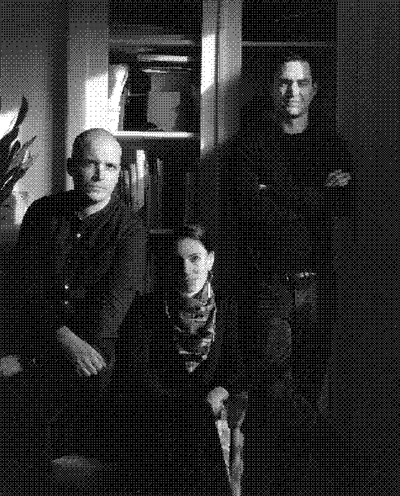Could you please introduce yourself concisely?
My name’s Marc Armand, and I produce images. I can’t express it more concisely than that.
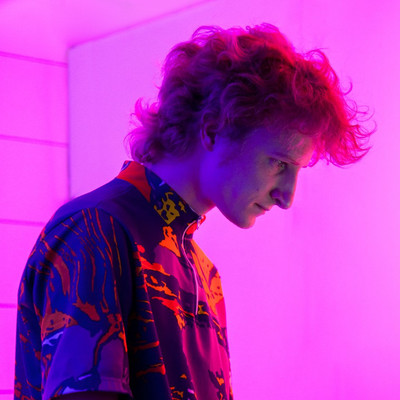

Portrait of Marc Armand
Do you see yourself more as an artistic director or a creative director?
Creative director. I can direct a project, creatively speaking. The end result being images upon which I’ve had a conceptual influence. I don’t yet see myself as the kind of creative director who sets a project up and then walks away. I always want to be involved. Before, it was imperative for me to be involved in every single aspect of every single image I produced. Now that I have more experience, I’m completely open to collaborating on the creative process. Though I’m always keen to leave my mark.
Can you tell us a little about your studio? Is it even a studio?
Let’s say that for the moment we have an organic team working on projects that I initiate and then leave in other expert hands. I strive to work with trustworthy people, the idea being that they might one day join my team on a full‑time basis, depending naturally on their level of expertise. Generally speaking, I’m always looking to bring more structure to our organic process.
In order to appear bigger?
Not bigger, more solid. I’m not aiming for an “agency” feel. The client needs to know that we’re equal to any task. Solid, but flexible, too.
Will you still be called Marc Armand?
Maybe Marc Armand Corp. or Marc Armand Inc., or Marc Armand Intl.! (laughs)


Nike Air Max TN, Global Art Direction for the Event celebrating the ‘Requin’ 20th anniversary. Custom TN typeface developped with Antoine Elsensohn. Set design by Service Généraux.


Nike Air Max TN, Global Art Direction for the Event celebrating the ‘Requin’ 20th anniversary. Custom TN typeface developped with Antoine Elsensohn. Set design by Service Généraux.
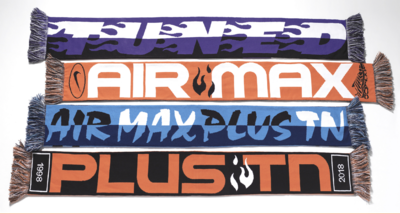

Nike Air Max TN, Global Art Direction for the Event celebrating the ‘Requin’ 20th anniversary. Custom TN typeface developped with Antoine Elsensohn. Set design by Service Généraux.
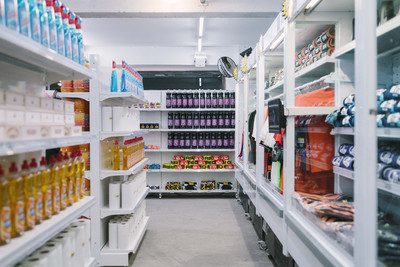

Nike Air Max TN, Global Art Direction for the Event celebrating the ‘Requin’ 20th anniversary. Custom TN typeface developped with Antoine Elsensohn. Set design by Service Généraux.
What’s your state of mind these days?
I tend as a general rule to be optimistic. I feel like I escaped the worst of it in this Covid crisis. I’m optimistic cause I’m lucky enough to have a job in which things are going okay. Let’s say I’m warily optimistic.
For many people, your name is synonymous with a certain kind of visual. Would you say that you have a style? If so, how would you describe it?
I don’t like to talk too much about “style”. There’s something ephemeral in the notion of style, something trendy. I prefer “spirit”. One of my strengths, when I’m at the top of my game, is that I have a cross‑sectional approach. Not in terms of print, web, or motion graphics, but a world of images, a spirit that asserts itself in several distinct ways. This is something I developed over time. People who know me are aware of the relationship between the way I look and the images I create. I’m talking about something more comprehensive, more personified than mere style. Style can fall out of fashion.
What are some of the recurring features of your images?
Specifically: colour, typography, a form of expressionism. But mainly a generous, optimistic, and fearlessly personal spirit anchored in the idea of fun. It’s visual entertainment.


Please! magazine ‘We Are Family’ Issue 27


Please! magazine ‘We Are Family’ Issue 27


Please! magazine ‘We Are Family’ Issue 27
Anybody you’re aware of who shares this approach?
Not necessarily. If I developed in this way, it’s also because of who I am, my character. There is a direct link between my character and my work.


Character design of Josh & Joss, the two protagonists of Sosh’s campaign for 2019-2020
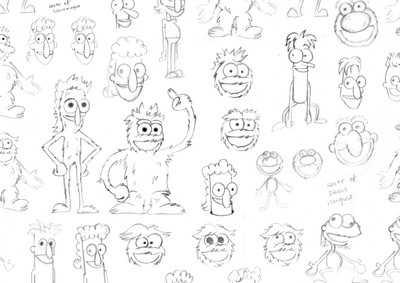

Character design of Josh & Joss, the two protagonists of Sosh’s campaign for 2019-2020


Josh, Joss and Marc.
Would you say that your approach comes out of the French traditions of ornamentation, decoration, and more broadly speaking, the use of colour in the arts?
Yes, but not directly. My work may not explicitly refer to the French decorative arts, but looking closely I recognize its influence. The French graphic artists I admired when I was in school came out of the golden age of French graphic design. They inspired me, they made me want to become a designer.
Who for example?
M/M, Antoine + Manuel, Bernard Baissait, Catherine Zask, Anette Lenz, and Christophe Jacquet in the big silkscreen poster period. Although there’s not necessarily a direct link between their creative language and mine, they did make me want to do this job. Their work inspired – and continues to inspire – me both formally and visually, more through the freedom they brought to their compositions than through their approach, which was of another time.
Your earliest references?
The career I chose is directly linked to the graffiti I did as a teenager. I was very methodical and intense about it, in illegal and legal settings, anything you can think of really. I thought about it all the time. In high school my notebooks were full of letter designs. Other people drew everything they saw, or drew cartoons, I designed letters constantly, to the detriment of my schoolwork. I was obsessed with music and graffiti.
Which is why, even though I didn’t have an artistic background, I went to art school. Growing up in the suburbs, I didn’t go to a lot of art shows.
As for my earliest references, they’re all music‑related images. Peter Saville, Neville Brody, Designers Republic in particular. When I got out of art school I was determined to work in the music business… The necessities of making a living soon put an abrupt end to that. (laughs)
In terms of influences there are also all those 1970s and 1980s Japanese designers who gravitated around Issey Miyake: Tadanori Yokoo who made many posters and magazine covers, Nagai Kazumasa, and Mitsuo Katsui, whose use of shading is amazing.
I still find inspiration in their visuals, because they really made graphic art in the noblest sense of the term. Each magazine cover was a work of art.
Other major influences include Memphis and Alchimia, and Italian postmodernism in general. Mainly Alessandro Mendini. He inspired me a lot in terms of spirit, the way he went about his work, it was decorative, bizarre, useful/useless, never quite delivering what was expected, but it was always relevant. His work is both decorative and radical. I lost interest in their work when in the 2010s their aesthetic became trendy because of its 1980s kitsch look. I found that very restrictive. But now that trend is behind us and I can calmly go back to their work, learn from it anew and draw inspiration from it (thanks also to the Futurissimo exhibition, too). As for graphics and typography, I have a deep fascination for Emigre Fonts and in the same vein, Jonathan Barnbrook, but also for Dutch, German, and Russian design, for Studio Dumbar, Cyan, and Ostengruppe… I’ve also been influenced by a host of fashion designers including Bernhard Willhelm, Walter Van Beirendonck, Jean-Paul Lespagnard, and Manish Arora.
Then too, an endless source of inspiration is vernacular design, what I see every day in the street: trucks, signs, youth centre posters, a super ugly book on techno aesthetics picked up in a flea market, an old piece of clothing with an insane pattern, all the things one finds far from the beaten path of good taste, and which are continually surprising.


Hyères International Fashion and Photography Festival Poster, 2021
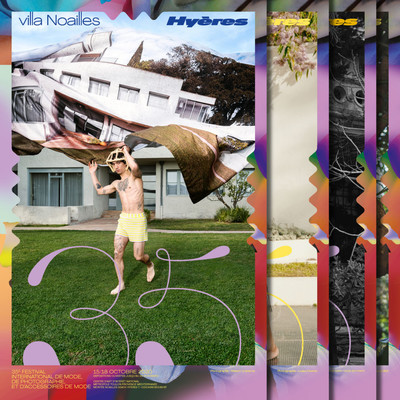
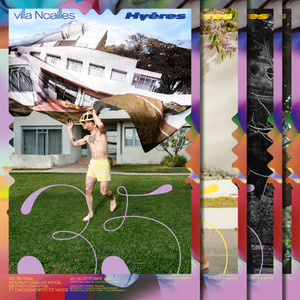
Hyères International Fashion and Photography Festival Posters, 2020


Hyères International Fashion and Photography, 2020


Hères Festival 2020 catalogues. Background images by Florent Groc and printed by Art & Caractère.
You distanced yourself from your initial influences, by adopting a more modern approach. How would you describe it?
It’s a reflection of our time. Those designers had more time to work. They didn’t have internet. The long processes involved in printing had to be respected, and were congenial to experimental concepts. At that time there was the idea of the designer as a figure, an artist, an auteur and I’ve always found that stance fascinating, perilous though it may be in our day and age… Internet, the digitalization of everything makes it much more difficult. You have less time to establish the auteur side. When I’m working on the identity of a cultural place, my aim is to create a very auteur universe, with a strong graphic identity, very image‑based but compatible with current media and tools (web, RS, video, motion graphics).
Théâtre 13 identity


Théâtre 13 poster


Théâtre 13
Tell us about your relationship to type design.
I make sure to take the time to delve into what’s being done nowadays in terms of type design. Because I don’t want to miss anything, and I need to be aware of all the tools available to me. I use type design a little like I use images. I’m not strict about it. For me, it remains an element of graphic design, just like a pattern. I have a hands‑on approach to any font I’m using on a poster or for a visual, even an Instagram post. It’s all graphic material to me.
So monitoring is an important part of your work. How do you feel about contemporary type design? In terms of offer, and foundries…
I see them the same way I see contemporary images, at least the way one goes about creating them. And though it’s a commonplace to say so, everybody’s something of a graphic designer these days, because of or thanks to Instagram in particular. People are more aware of graphic design and typography than they used to be, and there’s a lot to choose from. It’s interesting from a professional point of view because you’re dealing with people who have a keen eye and an awareness of graphic design. Technical facility has improved, as tools are more accessible. This very abundance has created a kind of globalization and if there’s a lot of good work I think there’s neither more nor less exceptional work than before.
So while in terms of general quality the level of work has improved, the quantity of exceptional work has not increased despite the growth in production. Let’s say that on the whole the level of work has improved, though it tends to be somewhat streamlined.
So is it harder nowadays to make a name for oneself?
It’s not harder, it’s easier. The thing that’s hard is to last.


You say that you do a lot of monitoring. Does that stoke your creativity or do you have other methods for that?
My monitoring’s got nothing to do with creativity, I do it to see what’s trending, and how my work fits in with that. Because at the end of the day, in some way, shape or form my work has to be part of what’s trending. I also do it to stand out, which is what I’m asked to do, after all. To be a little ahead of the curve, or counter to it. It depends on the project. You mustn’t forget that this is a profession. I am not an artist. I am in the service of a project.
If it’s a fashion project, my knowledge of what’s going on in fashion might give me an edge, allow me to adjust.
To remain creative and inspired I use music, contemporary art, film, and other unrelated things such as watering my plants and travelling. I sometimes stop monitoring to enjoy things afresh, and seek out personally enriching things. That’s key. If not I might end up in the soft underbelly of creativity I mentioned earlier.
Do you see yourself continuing along these creative lines in the next 10 years?
There are two aspects to my job: the creative, and the professional. As far as the creative part goes, since so much of myself goes into my creativity, I think I can stick to the same approach. Also, the more I give my personality free rein, the greater confidence I have in myself and my ideas, and the more professional I become. When I have to present my ideas I no longer dread shaping them totally. I want to keep going just like this, with increasing ease. My goal for the coming years is to grow while remaining true to myself, not becoming a robot, and continuing to be creative.
So the goal is to embrace those refreshing periods. Is that a development necessity?
Well, naturally, this is the key to longevity… I think. This is also why I don’t want my studio to get too big: the mechanical side sets in, it becomes all about organisation and logistics and that can really kill you in terms of creativity.
What was your game plan 10 years ago? Did you think that you might one day run a big studio?
Frankly, 10 years ago I didn’t have a game plan.
What were you up to?
In 2010 I was doing loads of personal stuff that I loved. On the rare occasions when I had professional work I always had a hard time getting my ideas across to the clients. So as a result I worked on a lot of poor projects that were a bit too pop in spirit and not well put together. I did lots of money jobs with agencies. I still wanted to work in music but couldn’t see a future in it. I knew that I needed paying agency jobs in order to keep working on my personal projects. Thankfully there was La Loge, a friends’ project in which I had carte blanche. There was no money but I loved it and took the time to do it right. To let it all out, and rework, start over with posters. I put a lot of pressure on myself to create visuals I was really happy about.
If the 2020 Marc Armand could travel back in time to talk for 20 seconds to the 2010 Marc Armand, what would he say?
I’d say: “Don’t worry”. And I’d high five myself. Then, a piece of advice: “Pick your battles wisely”. It’s imperative, especially when working with other people, not to waste energy.
What was lacking at the start of your career?
Well, rather prosaically I’d say money. Having no money I had to take on all-comers, all projects, such as lettering for industrial cheese… Incidentally that was one of the most enthusiastic responses I ever got from a client. He asked me to add a “bite” to the font. I was making 250 € a month with my personal projects, so I really needed the money.
And as far as developing your career, what would you have liked to know then?
I would have liked to know how to better present myself, to be smarter in the way I contacted prospective clients. Thinking back, I realize that I spent quite a long time prospecting clients in the wrong way. This was during a kind of interval in time, before Instagram. I don’t think I managed that part of my career very wisely.
Stuck somewhere between presentation and prospecting?
Yes. I wanted to work on more creative projects, and I needed to make a living. Looking back, my approach to prospecting was wrong. I wasn’t on the ball; I didn’t know how to interact with people. Also, I was lacking in self‑confidence.
How did you fix that? And how do you go about prospecting now?
It fixed itself, really, organically and naturally. I became more confident over time. Also, a first project with Lacoste boosted my self‑confidence.
Finally, the images I had been creating for my own benefit began attracting attention from the fashion world, mainly the images from La Loge plus a few musical projects and what I posted on my site (images, fonts, letters, drawings). I had made a site with a friend using an HTML template, a simple thing that reflected my personality. I think that’s what attracted the Lacoste L!VE team (shout‑out to them!) for a project. I was deep into Memphis imagery at the time and that was what they wanted for their collection. They were my first fashion clients and everybody knows Lacoste. The size of the project too – it was bigger than anything I had done before. That was definitely a growing experience. People began to notice that I was more relaxed, freer.
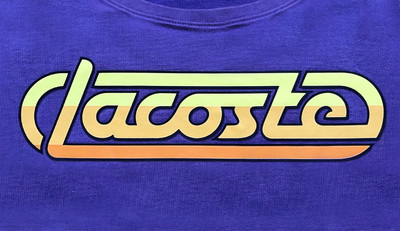

Prints & patterns design of Lacoste L!VE collections, ongoing collection since 2012


Prints & patterns design of Lacoste L!VE collections, ongoing collection since 2012
You said earlier that you worked a lot with ad agencies. How did that help you grow as an AD?
It was a very positive experience. Of course, there were times when I wondered what the hell I was doing there. But even that helps you grow. Also, you have to work quickly, there’s immediacy for example when 10 ADs before you failed and you’ve got one hour to come up with something for a huge client. Making it work in one hour is how you learn. Teamwork also takes some learning. Working with the marketing people, the planner, the suits… I learned all of that through working in agencies, though I don’t necessarily go about my business that way now. I also learned about “ideas sales”. A big creative director or agency director selling their project to a big client is something to see. As a designer, I was motivated by the desire to make a small contribution to the improvement of the advertising landscape. If when working on an uninteresting project I was able to improve it just a little bit, I felt like I was doing my job. And it really is the only way to do that kind of work. Otherwise it’s too depressing. Once, for a month I had an ad for a new car on billboards all over Paris, and I was just happy I had done my job well. Everybody says that advertising is ugly, but you see it everywhere and it definitely won’t ever change if nobody tries to inject a little design into it… Luckily enough you do find ad agencies with artistic directors who share that mindset.
Branding designers like to say: “Occupy the visual landscape in order to try to change it”.
I was exposed to and adopted that approach in my very first job. After I got out of art school I landed a six-month contract with Lowe Strateus, an advertising agency with a corporate graphic design department. They had two creative directors: Arnaud Freitas and Christophe Burine. It was a very positive experience. The projects were massive: EDF, SNCF, and other companies listed on the French stock exchange. Not the sexiest projects, but the two CDs were mad about typography and graphic design, publishing and photography. This was in 2008. They fought for an annual report shot by a Magnum photographer in Indian telecom factories. The photographs were beautiful and so was the annual report. The six months I spent there taught me an awful lot of things. I’m still thankful to them.
What did the agency teach you about presenting your work?
Post-rationalisation. I still use it now. When at the start of a project I don’t have any precise ideas, I search, I experiment, I run a few intuitive tests, and once I’ve got visuals that make sense, I formulate the idea. When presenting the visual to the client I link what I have produced to the subsequent idea. It sounds like a con job, as if we were snowing the client but intuition rules because intuition makes sense. There is obviously a reason for spontaneously choosing this or that artistic or graphic solution.
Are there other things you have learned, but that you don’t use in your work?
Ageism is something I witnessed a lot in agencies. I now know how to spot it in my clients. Ageism means you want to do “young,” “cool” things. Whereas it might be more satisfying to accept that you are old and corny, or simply yourself. Also: being sure of yourself when you present a project. Pretending to be 100% confident even if you are not.
Looking at your career as a whole, how have you changed?
I forced myself to do what I felt like doing, with my infamous unpaid personal projects, and in this manner I got it all out. Now I have more technique, more confidence. My work’s increasingly fluid and I feel like I have a better grasp of my ideas. It’s a virtuous circle: knowing that people want to work with me because they like what I have done. I’m no longer shy about putting things on the table that they might be unfamiliar with, as long as I remain true to the spirit. Another bit of wisdom someone shared with me and that I continue to believe in, is that people want to work with you because of what you have already done. So if you want to do this or that, you need to do it proactively, beforehand, to give direction to your work and portfolio.
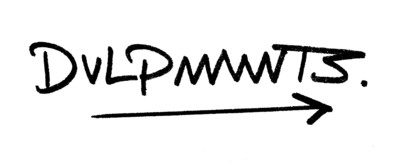

Are people more image-savvy nowadays? Do you think clients have changed these past 10 years and prepare better briefs?
The art of the brief is difficult. A brief both clear and precise is rare. For a designer, deciphering a brief is the challenge. It’s not the client’s job to prepare briefs, except for communications managers. Which brings me to another piece of advice I would give: learn to decipher a brief, ask the client loads of questions, interest yourself in their business, the better to understand them. What does the client want beyond what they are telling you?


Hervé / Hyper, Art direction and design for Hervé’s first album HYPER (Initiales, 2020)


Hervé / Hyper, Art direction and design for Hervé’s first album HYPER (Initiales, 2020)


Hervé / Hyper, Art direction and design for Hervé’s first album HYPER (Initiales, 2020)
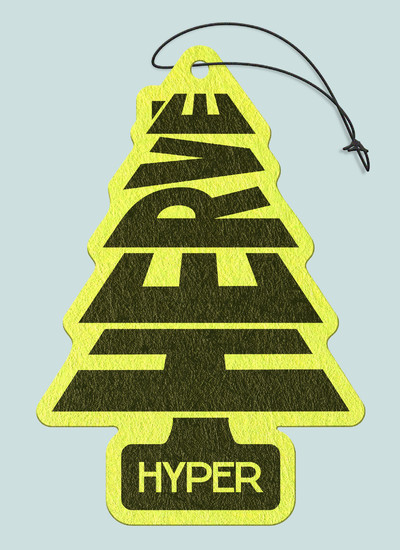

Hervé / Hyper, Art direction and design for Hervé’s first album HYPER (Initiales, 2020)
Is rewriting a brief and leading the client in the right direction part of agency culture?
Maybe. You take the brief and come up with a strategy and a schedule. Then you fill in the creative department and get everybody moving in the right direction. It’s kind of an abstract form of creative direction.
Do you have any other prospecting strategies?
No, not really.
You do attend numerous events, though. Out of mere curiosity or with the aim of meeting people?
I admit there is a strategic element to it. But it comes naturally, because I really do want to meet people. I like the idea of a milieu, a collective, a corporation of craftsmen as it were, and getting to know other creative people. Because I find them interesting, quite simply. That’s what being part of a milieu is all about.
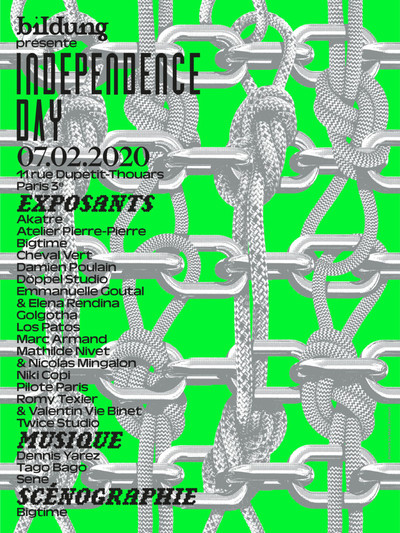

Poster for Bildung’s annual party (2020)
You were saying that you need to be more structured, and that you need to find time to express your creativity. Does that mean that you need to prospect more?
That’s what I keep telling myself. I do prospect a little, but not enough because I’m still not able to find the time, simply put. Here the circle’s less virtuous. But I’m working on it.
Do you have any strategic references? Or a model that excites you?
Certain career paths I find particularly compelling. M/M for example, continue to do what they’ve always done, yet it’s always new. The way they managed to remain true to their creative selves while running a successful business is impressive. Base Design is another example, impressive in all respects. I met Dimitri a long time ago, he was very laid back and unaffected. He told me they set up their company while on vacation in Spain at the beach with their friends. What they did then was great and their recent projects are also fantastic, so their career path is a true inspiration. Same for Studio Dumbar, amazing in terms of longevity and unerring quality. Mirko Borsche is a great inspiration too. I love the way he never deviates from the mad angle that permeates all his work.
You were saying earlier that one shouldn’t hesitate to take on projects and present them in a way that’s attractive to new kinds of clients. Do working on spec and being proactive necessarily go together?
Yes. This connects to what I was saying about the Memphis visuals bringing me to Lacoste. La Loge was a theatre, but the images I was making for them, the technoid typographies and fluorescent yellow had nothing to do with the theatre. I didn’t know anything about the theatres business and ignored it intentionally. But La Loge had this image of a yellow place, a place that was supposed to be super “weird”. The project itself was buoyed by its image and its visual identity.


La Loge Poster


La Loge


La Loge


La Loge
Are there any projects that you are focusing on for 2022 and beyond?
Everything related to patterns and fabric printing… That’s what I’d like to get into. To make logos, identities, I like that a lot, but I would also like to head in more of an “art deco” direction. I like the tangible aspect of things. And I’d like to breathe life into all of that, literally.
We were talking about being proactive to get clients. How do you create loyalty once you have them?
I try to be generous and flexible, and always professional. Take Nike, for example, I gave them everything I had in mind for our first project.
This has often been my method. Clients tend to like my initial ideas because there are lots of things to see. And that may be why they keep working with me… as long as I don’t scare them off. (laughs)


T-shirt design for Nike House of Innovation


T-shirt design for Nike House of Innovation
And how do you maintain that level of generosity?
I don’t go in all directions. If it’s outside the brief, there’s a quality in the design which can be interesting for the project. There is always something that triggers their interest. Even if sometimes I go too far, it’s always for the good of the project. If only to determine what we need to avoid, what can’t be done. It’s always good to clarify things. On the other hand, I never show something I don’t like or I’m uncomfortable with.
You were talking about getting structured earlier, saying that you had some partnerships going, collaborations, an assistant. How do you think through these collaborations?
There are artistic and practical factors to take into account: when I need help or when I like someone’s work, or because I trust that person, because we have affinities. Feeling has a lot to do with it. I’d never work with someone I didn’t feel comfortable with on a personal level, even if that person had talent.
Do you monitor Instagram to recruit, like you monitor typefaces?
Not really. But with Victor, my assistant, we had a Zoom interview and I immediately knew it was going to be cool. His portfolio was good, but more than that there was a good vibe during the interview.
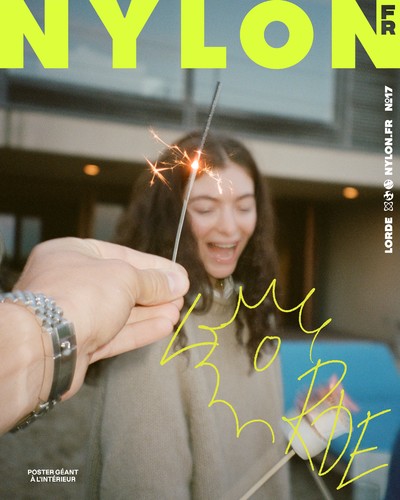

NYLON magazine, lettering by Hélène Marian


NYLON magazine, lettering by Hélène Marian

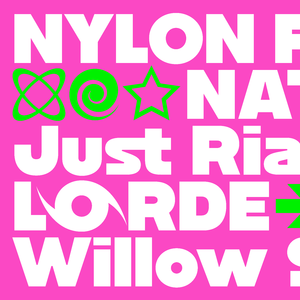
NYLON Magazine Font
Are you good at delegating?
I think I am, as long as I trust the person and as long as that person has shown me that they can do what they need to do. If a project means a lot to me personally and has to be done in a short timeframe then I do it all by myself. I think I can be a good AD and let the other graphic designers do their part, though things have to be clear in my mind from the outset. It also has to be a project that means less to me personally. Then I say to myself that the important thing is to get it done.
Does that make it easier to give direction to the other members of your team?
There was a Nike project I did with Image Format. From the beginning I knew I was going to be the AD and they would do the graphics. The project went really well and we were all stoked, I think.
You didn’t train to become a manager, so how did you end up becoming one?
The seeds are always planted in advance, by thinking out how a project is going to unfold while taking the time to explain instead of just jumping right in and briefing everyone in haste.
As you know, in agencies you have the AD and the copywriters who become creative directors. You did something similar, but independently. You worked alone, then you set up a team and began delegating. What’s the best way to make this kind of move?
You’ve got to learn to bounce from one thing to the next, trust the people you work with, and nurture the relationship. And mainly keep an eye on their work and get updates without putting too much pressure on them.
What should you absolutely avoid doing?
Validating things every step of the way. I knew a famous agency director who did that and it was counterproductive. Everything had to go through him, absolutely everything. This was before Instagram, but I’m sure today he checks every single post on any project. You knew you had succeeded when you sent him something and he didn’t respond. Work’s not life. Even when you’re independent. It takes up a lot of time but there are more important things, this I discovered later. When you want to prove something, it can drive you crazy. If you know from the outset that work’s not life, then you can relax a little, take things less seriously, and perhaps move up the ladder a little more quickly. I probably would have done better at prospecting if I had been a little more laid back.


NYLON magazine, lettering by Hélène Marian
How have things evolved in your profession?
Nowadays, being interesting and attractive means being digitally relevant.
And what about 3D?
I don’t use it too much, not yet. It fascinates me even though I don’t know much about it, and I have a hard time getting into it. I am skeptical regarding the current trend with 3D all over Instagram. There are some wonderful things, but it is somewhat systematic. Once that fad is behind us, the 3D tool will still exist and will perhaps be even more interesting to use.
And typography?
For the moment I don’t have any insights into the future of typography. Nowadays, typography is about democratisation and globalization. Which is good, if it means that more people will now be doing typography. It tends to be such an obscure discipline that it’s nice for once to see a light shining on it. But it may be that a typography fad is right around the corner and might, following the reign of the Swiss, herald a return to the Emigre spirit, with experimental type fonts and destruction of the grid.

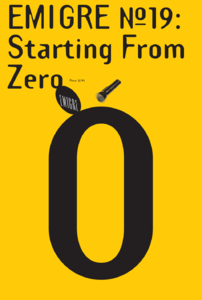
And how would you react to that?
I’m not quite sure nowadays. I’m growing, and have less of a need to feel these things. It’s like art history: take a cycle, repeat, and interpret. All those decorative typographies that are coming back… There are major works to which you always return. The same goes with the major typographical styles; they remain relevant. And yet you must always make sure to add a contemporary twist to it.


Futurissimo Exhibition Catalogue


Futurissimo Poster


Futurissimo Poster
Could you share one or several books that helped you find your way, influenced your work or your work ethic?
I did have a few key books. For each project I went to the same books. One, that I bought straight out of art school, is The Ten Influential Creators for Magazine Design by Yasushi Fujimoto. It was my Bible for a while. It wasn’t just the magazine aspect of it that I liked. There were also many strange creations and images. Tadanori Yokoo is in there, for example. There is another Japanese designer in there, outrageous and techno, who influenced me for years: Gento Matsumoto.
Any other books?
There is the one I discovered during my Castelbajac phase. In his boutique on rue Vauvilliers there was a book corner, and there I found a book on Alchimia by Kazuko Sato. That had a huge influence on me. There was a kind of esoteric and mystical side of postmodernism that I found later in Memphis. Another book too, a big book in a small format, like a dictionary, was Eighties Japanese Ads. It was full of 1980s Japanese ads, as is suggested by the title, it was awesome. There were lots of airbrushed images… A great reference in terms of composition, logo design, pictorials, and small Japanese graphic elements.

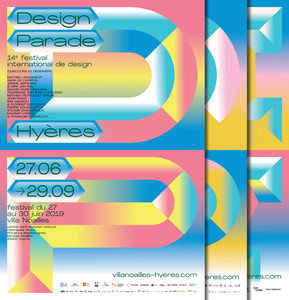
Design Parade International Design Festival 2019 poster
A personality in particular? You mentioned Castelbajac …
I liked Castelbajac’s aesthetic, also his career path. I listened to his interviews, I learned that he had created the costumes for Charlie’s Angels.
Otherwise, Prince. I am influenced by everything about him, the entirety of this style. It wasn’t his aesthetic necessarily, rather the atmosphere, the style that creates its own universe. The rhythm too is super important.
Otherwise, another collaboration that had a big influence on me was with Jean-Paul Goude. I was on his team for the collection he did for Desigual, I made the patterns. Very inspiring to rub shoulders with such a strong personality, and everything he embodies. Even his presence, his body language, you feel you are in the presence of an eternally young man.
Any advice for up and comers just embarking on an independent career?
I definitely don’t want to discourage anyone! If you are going to do it, you better desire it will all your heart. And even if work’s not life, you still need to give it a lot of energy, your heart and your guts. There’s no other way to do it. Which goes back to what I was saying earlier about always fighting to do interesting things. If you lose faith, do something else. You’ve got to have faith, to survive… Or else you’ve got to have the right people on your team.
If you had to do another job, during another time, what would it be and when ?
I would have been a dancer at a time when Merce Cunningham is still alive.
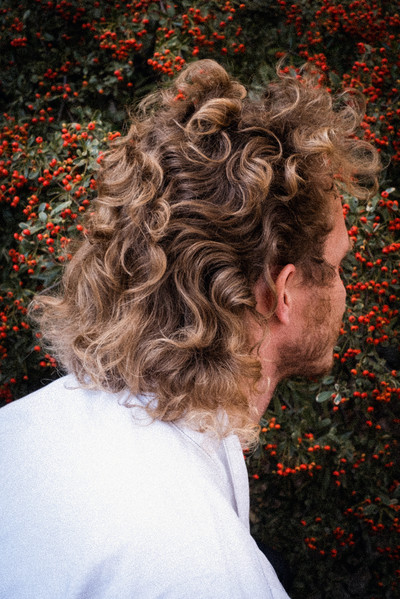

Hair portrait of Marc Armand
